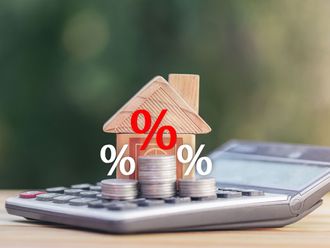With a tier-one developer finally starts offering post-handover payment plans to address the liquidity squeeze in the local market, the focus has once again shifted to that of developer margins. And its sustainability, given the “New Normal” dynamics in play within the local and regional economy.
To address this, it is not only worthwhile to examine how margins have changed during the course of the freehold phenomena, but how they compare to with international norms.
When freehold was first introduced in Dubai in 2002, there appeared to be a conscious effort to galvanise sales from the mid-income segment of the population, and projects were launched with this objective in mind. Prices were deliberately “affordable”, not only because of a new concept being launched in Dubai (a first in the region), but also because real estate was the best proven vehicle to channel savings towards home ownership, thereby spurring stable long term capital formation.
The subsequent asset boom in prices resulted in a transfer of wealth from developers to investors as the latter capitalised on the opportunity of a booming housing market. Typically, developers responded by increasing their prices in subsequent launches, a phenomena that continued well into the second real estate cycle.
Developer margins in Dubai have effectively doubled since 2002, rising from an average of 60 per cent in 2002 to nearly 110 per cent today (making them more than double the international average on a cash-on-cash basis).
Affordable segment
Typically, most of the margin expansion occurred at the higher end, as developers responded to the phenomena of higher oil prices by offering projects that catered to that segment, consequently leaving the mid-income segment underserved.
This phenomena was observed globally as well until the time of the global bust in 2008. NYU’s Stern School of Business estimates that global developer margins peaked in 2007, and since then have effectively halved, as focus started to shift towards the affordable segment with increasing resistance to price escalation at the higher end.
In Dubai, real estate markets have similarly shown a tendency to spilt towards a two-tiered market, as high end properties have corrected more significantly, both in terms of price and rents, than the mid income. This has been reflected since the market peak in late 2013, with an increasing number of off-plan properties now trading at “negative premia”.
Developers in Dubai thus far have resisted the temptation to reduce prices and thereby erode margins; instead post-handover payment plans have proliferated, along with promotional offers and other such incentives to galvanise sales.
For the most part, launch prices are yet to move lower, despite early evidence suggesting that post-handover payment plans have not been able to arrest the slide in prices in the secondary market. Evidentiary data from international markets also suggest that such offers do little by way of incentivising buyers, and ultimately gravity exerts itself in the form of prices falling towards equilibrium.
Payment plans
The recent caution being exhibited by banks in terms of offering mortgages may have acted as a catalyst for developers to offer in-house financing by way of such payment plans. But research suggests that in the long term, prices serve as the best signal to potential buyers that the time has come to put their money to work.
What has effectively transpired between the first and the second cycle, is that there has been a “transfer of wealth” between investors/end users towards the developers, resulting in an underserved mid-income market. It is inevitable that this trend has to “mean revert”, especially in light of falling oil prices and the “negative wealth effect” that has occurred in the high-end of the market.
Consequently, what is likely to evolve is a slow but sustained focus on the mid-income segment, as developers eventually offer lower prices to stimulate demand. The sooner this happens, the sooner markets reach a state of balance, which is when the inflection point occurs.
The writer is Managing Director of Global Capital Partners.











